
I was a little worried about posting this recipe in May, it seemed far too wintery, but as the rain comes down, I think I might just get away with it!!
A great meal in a bowl, this veggie chilli is comfort food at its best. Packed full of bright coloured vegetables, its a perfect midweek supper that helps to up your daily intake of veg. The guacamole, written as a separate recipe here is the perfect, and in my mind essential, accompaniment to the chilli, to not only give balance of flavour but nutritional balance too. Since I’ve been making my own guacamole I’ve become a complete convert. This chunky version is a far cry from the tubs of smooth guacamole available in supermarkets and the flavour is so much fresher and really packs a punch! Obviously the guacamole can be used aside from this recipe as a dip, served alongside summer barbecues, as an accompaniment to grilled fish, to top a big summer salad or as a filling for a wrap. The list could go on and on!!
This recipe was developed to help boost, maintain and support good digestion. You can find out the health benefits of some of the ingredients in the Chilli and Guacamole at the end of the recipe.
I’ve made this dish quite mild so the whole family can enjoy it. Spice it up with a little more chilli if you like the heat!
Serves 4
For the Sweet Potato Chilli
2tbsp olive oil or coconut oil
1 large red onion, roughly chopped
2 garlic cloves, crushed
2 sticks celery, finely chopped
1 red pepper, deseeded and roughly chopped
2 large carrots, peeled and diced
2 sweet potatoes, about 450g total weight
1 large red chilli, deseeded and finely chopped
400g tin chopped tomatoes
1tbsp tomato puree
1tsp ground cumin
1tsp paprika
1⁄2 tsp dried oregano
125ml vegetable stock
salt and pepper
400g tin kidney beans, rinsed and drained
Chunky Guacamole (recipe below) and chopped fresh coriander to serve

Heat the oil in a large saucepan. Add the onion and cook over a medium heat for 2-3 minutes. Stir in the garlic, celery, red pepper and carrot. Continue to cook, stirring occasionally for a further 3-4 minutes.

Meanwhile, peel and roughly dice the sweet potato into small chunks. Add to the saucepan with the chilli and continue to cook for a further 2-3minutes, stirring occasionally, until beginning to brown.
Stir in the tomatoes, tomato puree, spices,
oregano, stock and season well. Bring to the boil, cover and cook for 20-25 minutes until
the vegetables are beginning to soften.

Drain and rinse the kidney beans and add to the chilli. Continue to cook for a further 5 minutes until all the vegetables are just tender and the sauce is rich and thick.
Adjust seasoning and serve in bowls with a generous spoon full of guacamole and a sprinkling of chopped fresh coriander.
For the Chunky Guacamole
2 avocados
1 very small red onion
1 red chilli
2 tomatoes
small bunch fresh coriander juice of 1 lime
juice of 1-2 limes
olive oil
salt and pepper
Halve the avocado, remove the stone and scoop out the flesh. Roughly chop and place in a bowl. Peel the onion and finely chop. Deseed and finely chop the chilli and add these to the avocado. Quarter the tomatoes and scoop out the seeds and finely chop the flesh. Roughly chop the coriander and add to the bowl with the tomatoes. Add 2tbsp lime juice, 1tbsp olive oil and plenty of seasoning.
Peel the onion and finely chop. Deseed and finely chop the chilli and add these to the avocado. Quarter the tomatoes and scoop out the seeds and finely chop the flesh. Roughly chop the coriander and add to the bowl with the tomatoes. Add 2tbsp lime juice, 1tbsp olive oil and plenty of seasoning.
Gently stir the ingredients together. Taste, adjust the seasoning adding a little more lime juice if necessary. Keep covered until ready to serve with the Sweet Potato Chilli.
Health Benefits
Red onion
Onions contain a compound called inulin, which has prebiotic properties. A prebiotic will support growth and development of the good bacteria in the gut. These good bacteria will help to regulate many aspects of gut health from gut contractions, repair of the gut wall, help digest carbohydrates and support to the body’s immune system. Maintaining the integrity of the good bacteria in the gut will help to ease bloating and constipation. If bad bacteria are dominant in the gut, they begin to ferment gut contents causing uncomfortable gas, which quickly leads to bloating.
Chilli/paprika
Chillis have been shown to stimulate and enhance digestion and reduce symptoms of indigestion. (Murray, Pizzorno, Pizzorno 2006)
Cumin
Cumin is another spice with beneficial carminative properties. The essential oil it contains helps to relax the gut wall, reduce the production of gas and help release any gas already trapped. This has the benefit of relieving the discomfort of bloating. (Murray, Pizzorno, Pizzorno 2006)
Sweet potato
Sweet potatoes are very high in fibre which, when combined with water will swell and trigger stretch receptors in the gut wall to contract. This peristaltic action will help things to move along and will ultimately ease elimination of waste products from the bowel. Sweet potatoes are also a great prebiotic. They contain a polysaccharide, which helps support and encourage growth of good bacteria in the gut. A rich and diverse range of good bacteria will support digestion, repair damage in the lining of the gut wall and help regulate gut contractions, keeping digestive matter moving along. The right balance of good bacteria will help prevent digested matter being fermented by bad bacteria, which releases uncomfortable gas resulting in bloating.
Kidney Beans
Beans are one of the best sources of soluble and insoluble fibre. They contain a polysaccharide that is fermented by the good bacteria in the gut. You may feel this as one of the common after effects after eating beans! However in this instance the resulting effect is increasing the population of good bacteria in the gut, which in the long term, is what we are aiming for. Their high fibre content also creates a bulk to the gut contents, stimulating the stretch receptors to contract the gut wall. The resulting peristaltic action keeps things moving along the dietary tract, easing and helping to avoid constipation. However it is worth mentioning again the importance of drinking enough water along side this high fibre food to avoid exacerbating the effects of constipation.
Carrots, celery, avocado, tomato, red pepper
Including a wide variety of colourful vegetables in the diet will support digestive health by increasing the intake of fibre rich foods to maintain peristaltic action in the gut with the aim to keep the contents moving and avoid the build up of uncomfortable gas and bloating. A diet rich in vegetables will also supply the body with an increased variety of vitamins, mineral and phytochemicals to help keep the body functioning efficiently and keep the body digesting food effectively.
Pinnock/D Medicinal Cookery,. UK, 2015, Robinson. Dr Murray/M. Dr Pizzorno/J. Pizzorno/L. 2006 The Encyclopaedia of Healing Foods. Reprint Great Britain, Piatkus.

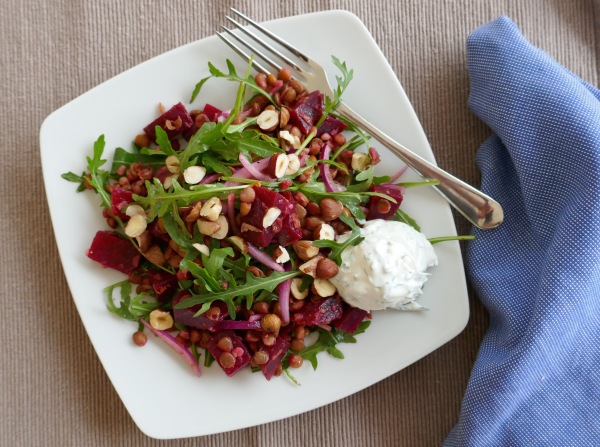

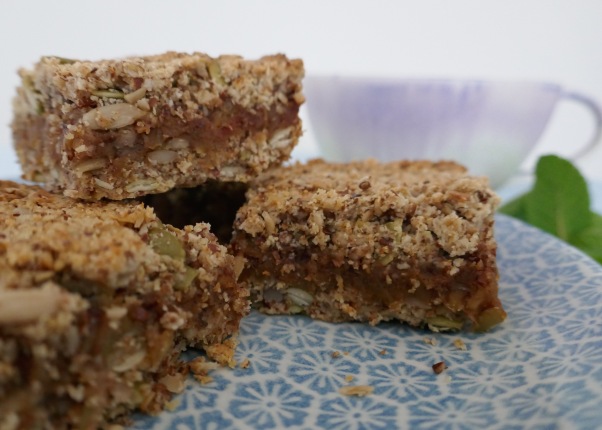
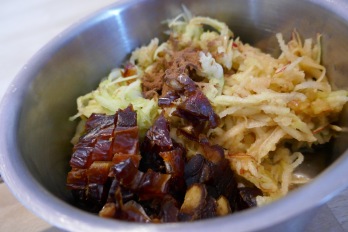
 Place the ground almonds, oats, seeds and a pinch of salt in a large bowl. Pour in the melted coconut oil mixture and stir well to combine.
Place the ground almonds, oats, seeds and a pinch of salt in a large bowl. Pour in the melted coconut oil mixture and stir well to combine. Bake at 180ºC for 15-20 minutes or until golden brown. Cool completely in the tin before cutting into squares. Store in an airtight container for up to 3 days.
Bake at 180ºC for 15-20 minutes or until golden brown. Cool completely in the tin before cutting into squares. Store in an airtight container for up to 3 days.
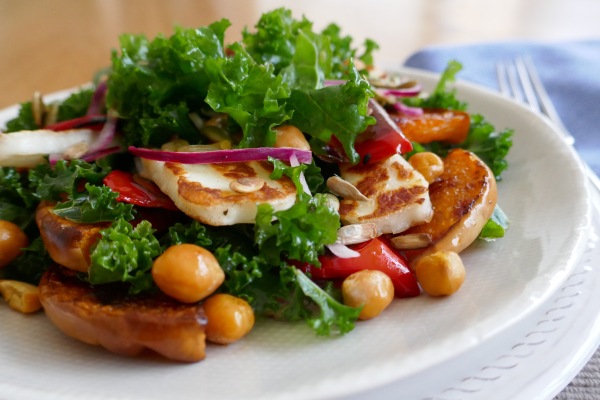
 Preheat the oven to 220ºC. Wash, but don’t peel the squash and cut into small chunks about 1cm thick. Wash de-seed and chop the pepper into similar sized pieces. Place on a baking sheet, drizzle with a little olive oil and sprinkle over the chilli flakes and a little salt and freshly ground black pepper. Place in the oven and cook for 30-35 minutes, turning occasionally.
Preheat the oven to 220ºC. Wash, but don’t peel the squash and cut into small chunks about 1cm thick. Wash de-seed and chop the pepper into similar sized pieces. Place on a baking sheet, drizzle with a little olive oil and sprinkle over the chilli flakes and a little salt and freshly ground black pepper. Place in the oven and cook for 30-35 minutes, turning occasionally.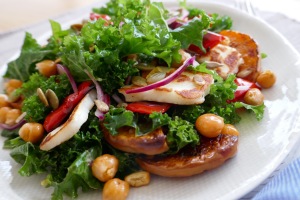

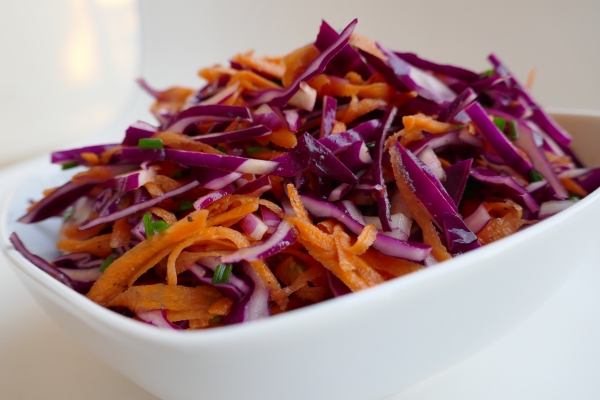
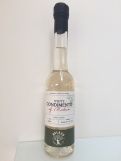 An incredibly simple dish to make with very few ingredients. I’ve used white balsamic vinegar as part of the dressing which gives an amazing flavour, slightly more subtle than dark balsamic and with the advantage of not colouring everything brown! The one I use is actually labelled, White Condimento of Modena, (pictured left) but there are many brands available. If you find one made in Modena, Italy then you know you’re getting the genuine article!
An incredibly simple dish to make with very few ingredients. I’ve used white balsamic vinegar as part of the dressing which gives an amazing flavour, slightly more subtle than dark balsamic and with the advantage of not colouring everything brown! The one I use is actually labelled, White Condimento of Modena, (pictured left) but there are many brands available. If you find one made in Modena, Italy then you know you’re getting the genuine article! Finely shred about half a red cabbage and place in a large bowl. Peel and coarsely grate 3 carrots and add to the cabbage with a peeled and finely sliced red onion. Drizzle over about 4tbsp olive oil and about 2tbsp white balsamic vinegar with plenty of seasoning. Toss the salad together to coat in the dressing. Finally stir in a handful of chopped fresh chives or parsley. Add a little more oil or vinegar to your taste if you wish.
Finely shred about half a red cabbage and place in a large bowl. Peel and coarsely grate 3 carrots and add to the cabbage with a peeled and finely sliced red onion. Drizzle over about 4tbsp olive oil and about 2tbsp white balsamic vinegar with plenty of seasoning. Toss the salad together to coat in the dressing. Finally stir in a handful of chopped fresh chives or parsley. Add a little more oil or vinegar to your taste if you wish.
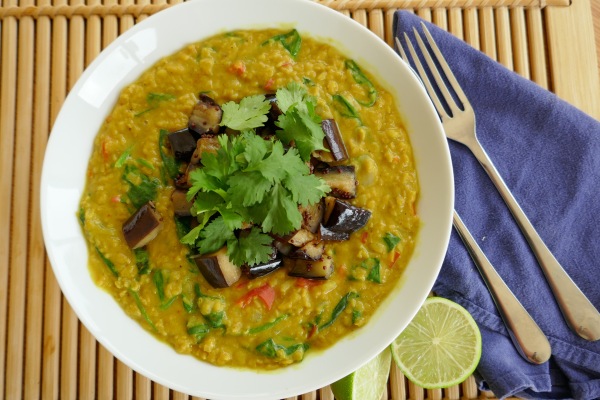
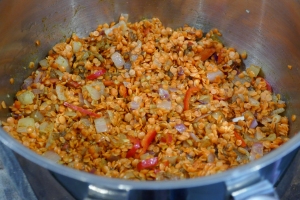 Heat 2tbsp coconut oil in a medium sized saucepan, add the onion, 1 clove crushed garlic and the ginger and cook for 2 minutes. Halve, deseed and slice the chilli, stir into the onions with the spices and lentils, cook for a further minute, stirring continuously. Stir in the coconut milk, refill the can with water and add to the pan. Season well.
Heat 2tbsp coconut oil in a medium sized saucepan, add the onion, 1 clove crushed garlic and the ginger and cook for 2 minutes. Halve, deseed and slice the chilli, stir into the onions with the spices and lentils, cook for a further minute, stirring continuously. Stir in the coconut milk, refill the can with water and add to the pan. Season well.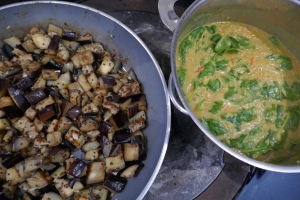 into cubes. Heat 2tbsp coconut oil in a frying pan and cook the aubergine for 10minutes over a medium high heat or until beginning to brown, stirring occasionally. Add the mustard seeds with the remaining 2 crushed garlic cloves and plenty of seasoning. Cook for a further 2-3 minutes, stirring occasionally.
into cubes. Heat 2tbsp coconut oil in a frying pan and cook the aubergine for 10minutes over a medium high heat or until beginning to brown, stirring occasionally. Add the mustard seeds with the remaining 2 crushed garlic cloves and plenty of seasoning. Cook for a further 2-3 minutes, stirring occasionally. erve the dal with a pile of aubergine on top and a generous sprinkling of fresh coriander. Serve a lime wedge on the side to squeeze over.
erve the dal with a pile of aubergine on top and a generous sprinkling of fresh coriander. Serve a lime wedge on the side to squeeze over.
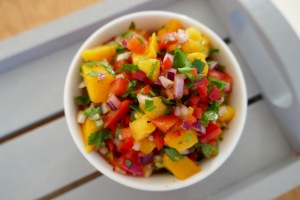 chopped and one red chilli, deseeded and finely chopped. Squeeze over the juice of a lime, a little splash of olive oil along with a good handful of chopped fresh coriander and a little seasoning. Stir together to combine and your salsa is ready.
chopped and one red chilli, deseeded and finely chopped. Squeeze over the juice of a lime, a little splash of olive oil along with a good handful of chopped fresh coriander and a little seasoning. Stir together to combine and your salsa is ready.
 Preheat the oven to 220ºC. Skin and cut the salmon fillets in half across the width. Thinly cut into 5mm slices and lay out on a baking sheet lined with non-stick baking parchment.
Preheat the oven to 220ºC. Skin and cut the salmon fillets in half across the width. Thinly cut into 5mm slices and lay out on a baking sheet lined with non-stick baking parchment.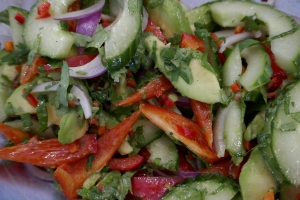 teaspoon to scoop out the seeds and slice on
teaspoon to scoop out the seeds and slice on s salad is best served within about an hour of making.If you’d like to prepare this in advance, cook the salmon, when cool, cover and chill. Prepare all the salad ingredients, except the avocado, cover and chill. Mix together the dressing and keep covered separately. To finish, prepare the avocado and complete as above.
s salad is best served within about an hour of making.If you’d like to prepare this in advance, cook the salmon, when cool, cover and chill. Prepare all the salad ingredients, except the avocado, cover and chill. Mix together the dressing and keep covered separately. To finish, prepare the avocado and complete as above.